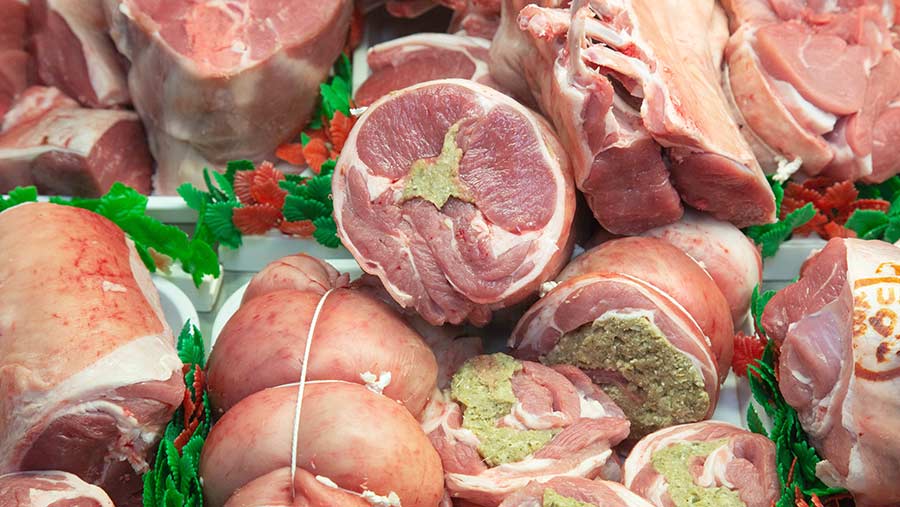Lamb prices rise as seasonal demand intensifies
 © Tim Scrivener
© Tim Scrivener Lamb prices hit their highest levels this week since last July and are expected to keep rising due to seasonal demand despite an increase in throughputs.
Buyers have swung into action to meet increased demand from consumers during the Easter weekend, and the Islamic month of Ramadan which begins in early May, when lamb dishes are a popular end to the daylight fasting hours.
Average liveweight lamb prices have jumped around 17p/kg in the past three weeks, putting an extra £7/head on a 40kg animal, but remain well below the record-breaking values seen during the first quarter of 2018 when values peaked at over 270p/kg.
See also: How multi-species swards can improve grassland production
Price update
The average liveweight price across Great Britain for an old season SQQ lamb – which has a weight falling between 25.5kg and 45.5kg – on Tuesday (9 April) was 217p/kg across 15,655 lambs.
Prices have risen from around 200p/kg in the past three weeks and now stand just above the five-year average, according to AHDB data.
The deadweight price has also risen, with the average price for an old season R3L SQQ lamb standing at 463.1p/kg in the week ending 6 April.
New season lambs in the SQQ bracket achieved a liveweight average of 275p/kg across 970 lambs sold.
Jonny Williams, senior livestock procurement officer with Scottish meat marketing co-operative Farm Stock, said he expected prices to continue to rise over the next two weeks, but they could come under pressure afterwards from plentiful supplies of new season lambs.
He advised farmers selecting lambs for slaughter that increased Easter consumption is predominantly supermarket-driven, which favour in-spec lambs around 20kg deadweight, but that leaner or overweight lambs would be more in demand in the next few weeks.
However, prices are not expected to return to the heights of last year despite an estimated 1 million fewer lambs available for marketing this season and lower imports from New Zealand.
Values have been held down this year by heavier lamb weights, Brexit uncertainty – which caused lamb finishers to hedge their bets by selling greater numbers earlier in the season – and lower demand due to Easter being late.
Last year’s prolonged period of wintry weather also dramatically slowed the growth rates of early-born new season lambs, which would have been targeted at the Easter market and further increased demand for the remaining old season hoggets.
New season lamb outlook
Good weather since the turn of the year is helping early lamb producers bring lambs to market more swiftly than last year at a lower cost.
Mr Williams said he expected lamb development to be three weeks ahead of last year, meaning good output across the country by the end of May.
AHDB auction market data shows that 3,230 new season lambs were sold at markets on Monday this week, compared with 2,499 on the equivalent market day last year.
Whitby beef and sheep farmer William Barker said he has seen significantly improved growth rates from his January-born lambs this year after the warm February weather boosted their performance. He is planning to market his first load this week.
Although sale prices were higher last year, he said increased costs from buying in extra feed and more mastitis trouble with the ewes had taken their toll.
“Prices were good last year but costs meant it was an average-to poor-season,” he said, adding that improved grass growth this year means he has already stopped feeding ewes.
